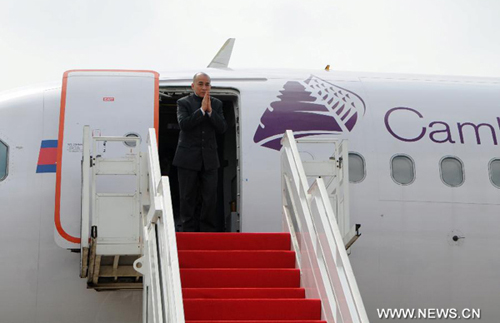Cambodian King, PM fly to Beijing to retrieve King-Father's body

Cambodian King Norodom Sihamoni and Prime Minister Hun Sen left for Beijing on Monday morning to bring home the body of King-Father Norodom Sihanouk who died at the age of 90.
They are accompanied by three Cambodian Buddhist monks led by Noy Chreok, the 3rd vice-patriarch of the country's Buddhist monks.
Sihanouk died at 1:20 am early Monday (local time in Phnom Penh) due to natural cause in Beijing Hospital of China, said a statement announced by the state-owned National Television of Cambodia Monday.
State flags are flying at half-mast across the country to mourn the death of the King-Father.
Norodom Sihanouk was born on October 31, 1922. He reigned Cambodia from 1941 to 1955 and again from 1993 until his voluntary abdication on October 7, 2004 in favor of his son, the current King Norodom Sihamoni.
He suffered from various forms of cancer, diabetes and hypertension and had been treated by Chinese doctors in Beijing for years before his death.
Sihanouk wrote in a royal letter in January, 2012 that he requested his body to be cremated instead of being buried and his ashes to be put in an urn, preferably made of gold, and placed in a stupa at the country's Royal Palace.